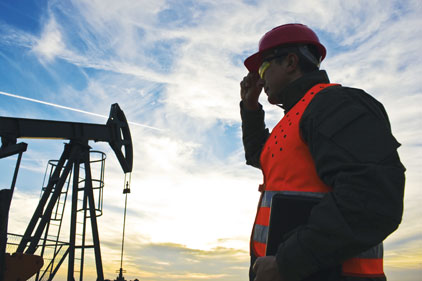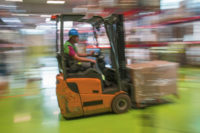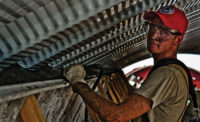The oil-field workers face a number of hazards, including harsh weather, equipment malfunction, and human threats. To mitigate these risks, they use kinetic mesh network technology. The use of a kinetic mesh network helps workers at oil fields keep track of assets and provides valuable operating and security data. The bottom line is that personnel are safer and the oil-drilling operation saves money as well.
For most operations, a network with fixed nodes is all that is required. A factory, for example will have entrances and exits that need to be monitored and perhaps manufacturing equipment from which you need to collect data. These assets are relatively fixed. You may change the location of an entrance or exit occasionally, or move equipment around on the factory floor from time to time, but these changes are not frequent.
An oil and gas drilling operation such as this one needs a different kind of network. This operation is literally in the “middle of nowhere,” covers more than 265 square miles, and has no cellular telephone, advanced mobile broadband, or Wi-Fi infrastructure. For this reason, the operators of this oil-drilling operation decided to install a kinetic mesh network.
How kinetic mesh technology works
To build a network where the nodes are in remote locations or are constantly changing location, you first of all need wireless network technology. Deploying a wireless mesh network allows you to quickly and easily provide communications even in areas without a communications infrastructure.
Wireless mesh network nodes act as electronic “breadcrumbs,” and they come in a variety of different configurations, including some that are meant to be bolted to a vehicle or piece of equipment and some that are made to be carried by personnel. Unlike network devices made for more benign environments, the devices made for use in a kinetic mesh network must work wherever they are deployed. As a result, they must be able to handle shock and vibration, dust, and extreme temperatures.
Another consideration for kinetic mesh networks is the frequency that they’ll operate on. To operate on certain bands, you’ll need to have a license, but on other bands, no license is required. The choice of frequencies is highly dependent on the application. In high-reliability applications, nodes that can operate on multiple frequencies are desirable.
In addition to robust hardware, a kinetic mesh network needs robust software. In order to maintain contact with the network, and choose the most expeditious path for the data, each node must be aware of the other nodes in its environment. Not only that, each node must constantly update this information as it and other nodes in the network constantly change positions.
To maintain reliability, the network must not use a root node or LAN controller. By making each individual node responsible for its own routing, the network will continue to function even if an individual node should fail.
Compatibility is another issue for kinetic mesh networks. They need to be compatible with IEEE 802.11a/b/g/n standards so that commercial off-the-shelf (COTS) client devices, such as laptops, smartphones, IP cameras, sensors, VoIP phones and other IP devices can be connected to them. This compatibility also enables users to connect the kinetic mesh networks to the outside world. This may be accomplished using a fiber optics link, microwave link, or even a satellite link.
The kinetic mesh network in action
At this particular oil and gas drilling operation, the kinetic mesh network is used to provide data, voice, and video communications. The applications built on top of the network are:
- Improving personnel safety,
- Facilitating equipment safety and maintenance
- Easing logistical challenges
For example, the network, which is still a work in progress, currently has four video cameras at strategic access points. These IP cameras help security personnel monitor the comings and goings of both workers and vehicles. While not in use at this particular location, some operations use facial-recognition software and license plate-recognition software to ensure that only the vehicles and personnel out there are supposed to be out there. The kinetic mesh network is also used to monitor the operation of the oil wells.
As you can imagine, reliability is paramount. When a hazardous situation occurs, getting the right information can be vitally important. With a kinetic mesh network in place, the operators of this oil and gas drilling operation are confident that they’re making this site as safe as possible.


